- Home
- Dan Millman
The Hidden School
The Hidden School Read online
Praise for The Hidden School
“With a masterful touch, Dan Millman’s The Hidden School will transform how we navigate our way through the seemingly everyday events of life, inspiring us to discover their hidden magic, all the while igniting the mystical essence within ourselves.”
—Michael Bernard Beckwith, author of Spiritual Liberation
“Dan Millman’s conclusion to his Peaceful Warrior saga is a remarkable odyssey of life, death, and meaning—the fully realized completion of a unique spiritual adventure. What a privilege to travel this unforgettable journey with him. This epiphanous work will stay with you long after you’ve read it.”
—Ed Spielman, creator of the landmark television series Kung Fu
“In this compelling story, Dan Millman takes us on a quest for the secret of eternal life. He moves easily between worlds, using external action-adventure as a metaphor for an internal spiritual quest, providing both entertainment and self-reflection. The Hidden School brings to mind the adventures of Carlos Castaneda and the mysterious quest in The Da Vinci Code. This is a page-turner, both entertaining and provocative. If you can only take one book to read on your next vacation, this is that book.”
—Ron Boyer, award-winning author, poet, and screenwriter
“In Way of the Peaceful Warrior, Dan Millman established himself as a master of teaching through story. Now, in this exciting adventure, he reveals how deep learning can be found in unexpected places. The wisdom he shares will illuminate many lives.”
—Don Miguel Ruiz, author of The Four Agreements
“Dan’s new book, The Hidden School, reminds me of the magic and mystery of Way of the Peaceful Warrior. This suspenseful, often humorous adventure shows the way to our own light, our own music, and our own way home. When I experienced adrenal fatigue syndrome in Tahiti back in 1986, Way of the Peaceful Warrior literally saved my life. Keep on keepin’ on, Dan. I’ll always be there with and for you. Thank-Q, brother.”
—Quincy Jones, Grammy award–winning musician, producer, actor, and humanitarian
“The conclusion to Dan Millman’s life-changing Peaceful Warrior saga was well worth the wait. This riveting quest through many exotic locations reminds readers what it means to follow a spiritual path in the modern world. Millman’s journey includes memorable characters and daunting challenges on the way to wisdom and inner peace. It’s a book for anyone interested in life’s bigger picture and deeper currents.”
—William Bernhardt, bestselling author of Challengers of the Dust
“A brilliant sequel to a timeless classic. Well done. I highly recommend this treasure.”
—Caroline Myss, author of Anatomy of the Spirit and Sacred Contracts
“Dan’s new book is a must-read journey of transformation. Few other books so skillfully combine story and substance as this Peaceful Warrior adventure.”
—Tony Robbins, #1 New York Times bestselling author, entrepreneur, and philanthropist
“The Hidden School is filled with beautiful lessons that challenge your ideas of reality and push you to live a more inspired life.”
—Amy Smart, actress and activist
Thank you for downloading this Simon & Schuster ebook.
* * *
Get a FREE ebook when you join our mailing list. Plus, get updates on new releases, deals, recommended reads, and more from Simon & Schuster. Click below to sign up and see terms and conditions.
CLICK HERE TO SIGN UP
Already a subscriber? Provide your email again so we can register this ebook and send you more of what you like to read. You will continue to receive exclusive offers in your inbox.
To all those striving to live with a peaceful heart and a warrior spirit.
No two persons ever read the same book.
Edmund Wilson
CONTENTS
* * *
Prologue
Part One: A Book in the Desert
Chapter One
Chapter Two
Chapter Three
Chapter Four
Chapter Five
Chapter Six
Chapter Seven
Chapter Eight
Chapter Nine
Chapter Ten
Chapter Eleven
Chapter Twelve
Chapter Thirteen
Part Two: The Master of Taishan Forest
Chapter Fourteen
Chapter Fifteen
Chapter Sixteen
Chapter Seventeen
Chapter Eighteen
Chapter Nineteen
Chapter Twenty
Chapter Twenty-One
Chapter Twenty-Two
Chapter Twenty-Three
Chapter Twenty-Four
Chapter Twenty-Five
Chapter Twenty-Six
Chapter Twenty-Seven
Chapter Twenty-Eight
Chapter Twenty-Nine
Part Three: Stones, Roots, Water
Chapter Thirty
Chapter Thirty-One
Chapter Thirty-Two
Chapter Thirty-Three
Chapter Thirty-Four
Chapter Thirty-Five
Epilogue
Acknowledgments
About the Author
PROLOGUE
* * *
Tales and dreams are the shadow-truths that will endure when mere facts are dust and ashes, and forgot.
NEIL GAIMAN
In 1966, during my college years, I met a mysterious service station mechanic I called Socrates, described in Way of the Peaceful Warrior. During our time together, Soc spoke of a woman shaman in Hawaii with whom he’d studied many years before. He also told me about a book he’d lost in the desert, and a school hidden somewhere in Asia, but the details soon drifted into the recesses of my memory.
Later, when I graduated, my old mentor sent me away with the words “No more spoon-feeding, junior. Time to learn from your own experience.” In the years that followed I married, fathered a child, coached gymnastics at Stanford University, and then taught movement arts while on the faculty of Oberlin College.
Eight years had passed since I first wandered into Soc’s all-night service station. To the casual eye, my life looked as good as it had during my college years as an elite athlete. But I was haunted by the feeling that I was missing something important—that real life was passing me by while I played pretend in the shallows of convention. Meanwhile, my wife and I had agreed to a formal separation.
Then I was awarded a worldwide travel grant from the college to research martial arts and mind-body disciplines. This opportunity reawakened those memories and the possibility that now I might find the people and places Socrates had mentioned years before. I could combine professional research with my personal quest.
This book, which narrates a journey across the world, opens just after my adventure in Hawaii (recounted in Sacred Journey of the Peaceful Warrior) and concludes just prior to the climactic ending of Way of the Peaceful Warrior.
Having completed the first leg of my travels in Hawaii, I’d now set my sights on Japan. That was before a chance discovery changed everything and proved the saying “Whenever you want to do something, you have to do something else first.”
It all began on a rainy September morning. . . .
PART ONE
* * *
A Book in the Desert
Fight nonviolently for a better world, but do not expect to find it easy; you shall not walk on roses. . . . Pilgrims of justice and peace must expect the desert.
DOM HÜLDER CMARA
ONE
* * *
A shower of leaves in the gray dawn drew my gaze out the rain-spattered window of my motel room on the island of Oahu. Dark clouds matched my mood as I floated between he
aven and earth, rootless, drifting through the in-between. My summer on Molokai with Mama Chia had raced by. Now I had a nine-month leave of absence before resuming my teaching duties.
Walking across the carpeted floor, clad only in my underwear, I stopped and glanced at my reflection in the bathroom mirror. Have I changed? I wondered. My muscular frame, a carryover from my college gymnastics days and recent labors on Molokai, looked the same. So did my tanned face, long jaw, and customary crew cut from the day before. Only the eyes gazing back at me seemed different. Will I one day resemble my old mentor, Socrates?
As soon as I’d arrived on Oahu a few days before, I’d called my seven-year-old daughter, who excitedly told me, “I’m going to travel like you, Daddy!” She and her mom were going to Texas to visit with relatives for a few months, maybe longer. Once again I dialed the number she’d given me, but no one answered. So I sat down and wrote her a note on the back of a picture postcard, punctuating it with Xs and Os, acutely aware of their inadequacy during my absence. I missed my daughter; the decision to travel all these months was not one I took lightly. I slipped the postcard into a leather-bound journal I’d purchased a few days before to record notes of my travels. I could mail the card later from the airport.
Now it was time to pack once again. I pulled my well-traveled knapsack from the closet and dumped my belongings onto the bed: two pairs of pants and T-shirts, underwear and socks, a light jacket, a collared sports shirt for special occasions. My running shoes rounded out the minimalist wardrobe.
I picked up the ten-inch bronze samurai statuette that I’d found off the coast of Molokai—a sign pointing me toward Japan, a long-sought destination where I might gain insight into Zen arts and bushido, the way of the warrior. I would also search for the hidden school that Socrates had challenged me to find. My flight to Japan was scheduled to depart the next day. As I repacked the knapsack, inserting my journal, the samurai, and then my clothes, I could still detect a faint scent of the rich red soil of the Hawaiian rain forest.
A few minutes later, realizing how easy it would be to forget the postcard I’d slid into my journal, I unzipped the pack and tugged at the journal, trying to extract it without dislodging all my neatly folded clothing. It wouldn’t budge. Frustrated, I pulled harder. As the journal came loose, its clasp must have caught the lining; I heard and felt a rip in the pack’s fabric. Reaching inside, I felt a slight bulge where the piece of lining had pulled away from the outer canvas shell. Then my hand found and drew out a thick envelope with a short message from Mama Chia written on the outside.
Socrates asked me to give you this letter when I thought you were ready.
Ready for what? I wondered, picturing my Hawaiian teacher’s silver hair, open smile, and large body draped in a floral muumuu. Intrigued, I opened the envelope and began to read a letter from Socrates.
Dan, there’s no cure for youth except time and perspective. When we first met, my words flew past you like leaves in the wind. You were willing to listen but not yet ready to hear. I sensed that you’d face frustration made more difficult by the belief that you were wiser than your peers.
Since Chia gave you this letter, you’re probably looking to the East for answers. But if you go east as a seeker, begging alms of insight, you’ll receive only a pittance. Go only when you can bring value to the table of wisdom. I’m not just waxing poetic here. First you need to find a book I lost in the desert decades ago.
This has got to be one of Soc’s pranks, I thought, imagining his poker face, the twinkle in his eye. Instead of going to Japan, he wants me to find a book in a desert? Which desert? A sigh died in my throat as I read on.
I have a feeling that what I wrote in that journal may provide a bridge between death and rebirth, even a gateway to eternal life—insights you’re going to need before this is over. I can’t be sure of any of this, since its precise contents and location are veiled in my memory.
The story of its origins is tied to my personal history: I was born in Russia nearly a century ago and raised as a military cadet. Much later, on the warrior’s path, I encountered a group of masters in the Pamir region in Central Asia: a Zen roshi, a Sufi, a Taoist, a master of the Kabbalah, a Christian nun. They offered insight and training in esoteric arts, but it would take me years to integrate what I’d learned. In my midforties, I immigrated to the United States near the end of the First World War. I attended night school and devoted myself to reading, writing, and speaking English as well as any American. Later I found work in construction, then in auto repair, for which I had an aptitude. I moved to Oklahoma, where my daughter taught school. After a decade there I returned to New York City.
Late one afternoon in my seventy-sixth year, while I was walking through what’s now called Greenwich Village, I stopped under the awning of a familiar antiquarian bookshop, where a gust of wind urged me inside. As usual, a jingling bell announced my arrival before the sound died as if smothered by a blanket. The musty odor of a thousand volumes filled the air. I walked the narrow aisles, opening a few books whose covers creaked like arthritic joints. I wouldn’t usually remember or relate such details, but what occurred that evening etched a vivid impression.
My eyes were drawn to the oldest woman I’d ever seen, sitting at a small table. As I gazed at her, she placed her hand on what looked like a thin journal, the kind with a leather strap and a clasp that locks with a key. She paged through one of several books on the table, then picked up a pen as if to begin a notation. Instead, she turned and looked up at me.
She had young eyes for a face so lined, eyes shining below bushy brows, and skin like the leather of her journal. She could have been Hispanic, Native American, or maybe Asian. Her face seemed to change with the shifting patterns of light. I nodded and turned to go, only to hear her voice beckoning me. To my great surprise, she called me by a nickname from my boyhood—the same name you called me.
“Socrates.”
“You seem to know me, yet I don’t recognize—”
“Nada,” she responded. “My name is Nada.”
“Your name is Nothing?” I said.
Her smile revealed the few yellowed teeth she had left.
To borrow time while I struggled to recall a place or time we might have met, I asked her what she was writing.
She put her hand on my arm and said with a Spanish accent: “Time is precious. My work is nearly done.” She wrote something on a scrap of paper and handed it to me. “Visit me tomorrow at this address. You’ll know what to do.” As she rose slowly to her feet, she added, “Come early. The door will be unlocked.”
The next morning, just after dawn, I found the apartment house at the address she’d given me, climbed one flight of squeaking stairs, and knocked softly on a door at the end of a dim hallway. No answer. She’d said it would be unlocked. I turned the knob and entered.
At first I thought the small studio was abandoned—empty save for an old carpet and a few cushions—the garret of a Zen monk or Catholic nun. Then I heard music so soft it could have come from an adjoining room or from my own memory. Seeing the glow of a lamp from an alcove, I passed an open window and felt a chill breeze. I found her slumped over the desk, her head resting on her arms. Next to her lay the open book, her journal, and a key to the clasp. A pen had fallen from her ancient fingers. Her arm was cold and dry as parchment. Only a discarded husk remained.
As I reached out to stroke her thin hair, the morning sun illuminated her face, lending it an ethereal glow. That’s when I recognized her.
I was thirty-five years old when I first met Nada. Her name was María then—a Christian mystic from Spain and one of my master teachers from the gathering in the Pamir. She had recognized me, nearly forty years later, in the bookstore. I’d failed to recall her, so she became Nada.
She’d known the end was coming. An envelope on the desk contained some money, enough to dispose of her remains, I guessed. On the front of the envelope she had scrawled three words: “Cremation. No relatives.” That
and a telephone number. I slipped the journal into my knapsack and the key into my pocket. After gazing back at her for a few moments and saying a silent farewell, I departed, leaving the door unlocked.
When I returned to my own small apartment, I felt as if I’d awakened from a dream, but the weight of her journal in my pack proved its reality. After using the hall phone to place a call to the mortuary, I sat down with the journal but I didn’t open it. Not yet. I wouldn’t treat it casually, like a dime-store novel. Despite my curiosity about what this mystic nun might have written, I’d wait to read it until after I scattered her ashes.
In the early evening a few days later, I retrieved the small urn holding all that remained of María, now Nada.
At dawn the next morning, I entered the lower end of Central Park, where I walked past Umpire Rock and meandered northward, passing familiar landmarks and lakes until I came to the Conservatory Garden, still closed for a few more hours. Climbing the fence, I found a quiet place to sit in a small cactus garden surrounded by thick foliage. As the rising sun shone on the desert plants, I scattered her ashes.
After a moment of silence, I took out her journal and unlocked the clasp. The leather-bound book fell open to an empty page. I turned to the next page. Also blank. I flipped through the pages. All empty.
My initial disappointment turned to amusement as I recalled María’s humor those decades past, and I wondered if she’d smiled at this final, Zenlike gesture of an empty book.
When she’d said, “You’ll know what to do,” I assumed she’d meant calling a crematorium and disposing of her ashes. And in telling me that her work was nearly done, she’d referred to a life well lived, now ended.
As I reached to close the journal, it fell open to the beginning, where I discovered handwriting hastily scrawled on the first page, under the date 11 March 1946—the night of her death. On that page I found two items written for me in her final moments: first was a story I’d come across before. This time, I read it carefully:

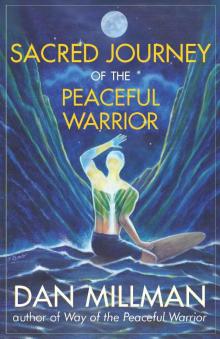 SACRED JOURNEY OF THE PEACEFUL WARRIOR
SACRED JOURNEY OF THE PEACEFUL WARRIOR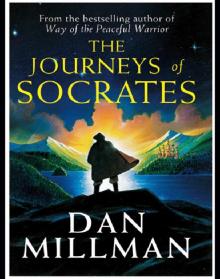 The Journeys of Socrates: An Adventure
The Journeys of Socrates: An Adventure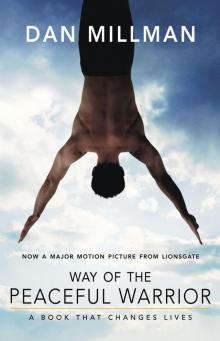 WAY OF THE PEACEFUL WARRIOR: A Book That Changes Lives
WAY OF THE PEACEFUL WARRIOR: A Book That Changes Lives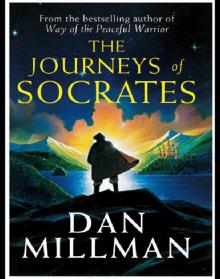 The Journeys of Socrates
The Journeys of Socrates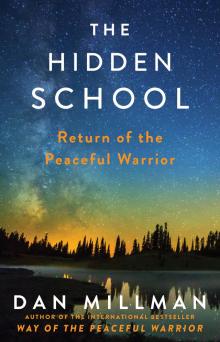 The Hidden School
The Hidden School